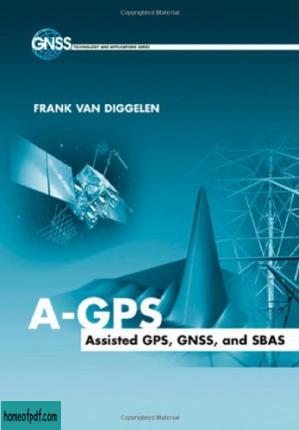A-GPS: Assisted GPS, GNSS, and SBAS
该资源由用户: 震雷蕴轩 上传 举报不良内容

尊敬的读者:
欢迎您访问我们的网站。本站的初衷是为大家提供一个共享学习资料、交换知识的平台。每位用户都可以将文件上传至网盘并分享。
然而,随着用户上传的资料增多,我们发现部分不宜或版权问题的书籍被分享到了本站。
为此,我们已经关闭了分享入口,并进行了多次书籍审查,但仍有部分内容未能彻底审查到位。
在此,我们恳请广大读者与我们共同监督,如发现任何不宜内容,请 点击此处 进行举报,我们会第一时间处理并下架相关内容。
希望我们能共建一个文明社区!感谢您的理解与支持!
猜你喜欢

《区块链社会》龚鸣
View more
《区块链社会》龚鸣

《远见》史蒂文・约翰逊文字版
View more
《远见》史蒂文・约翰逊文字版

《大一统:元至元十三年纪事》史卫民全新修订版
View more
《大一统:元至元十三年纪事》史卫民全新修订版

《书店四季》肖恩·白塞尔
View more
《书店四季》肖恩·白塞尔

Learning JavaScript Data Structures and Algorithms 2nd Edition - Loiane Groner
View more
Learning JavaScript Data Structures and Algorithms 2nd Edition - Loiane Groner

《竖屏思维:大幅度提升手机端转化率的逻辑和方法》陈柱子修正版
View more
《竖屏思维:大幅度提升手机端转化率的逻辑和方法》陈柱子修正版

《彷徨的杀意》陈俊霖
View more
《彷徨的杀意》陈俊霖

Sun Certified Security Administrator for Solaris 9 and 10 Study Guide - John Chirillo and Edgar Danielyan
View more
Sun Certified Security Administrator for Solaris 9 and 10 Study Guide - John Chirillo and Edgar Danielyan

《读心术:怎样在不为人知的情况下了解和影响他人》亨利克·费克萨斯全译修订版
View more
《读心术:怎样在不为人知的情况下了解和影响他人》亨利克·费克萨斯全译修订版

《数学不简单:从 最强大脑 发现思维乐趣》吴悦辰全新版
View more
《数学不简单:从 最强大脑 发现思维乐趣》吴悦辰全新版

Python 科学计算 - 张若愚
View more
Python 科学计算 - 张若愚

《东野圭吾年度套装》〔日〕东野圭吾新经典合集全套56册简体译文珍藏版
View more
《东野圭吾年度套装》〔日〕东野圭吾新经典合集全套56册简体译文珍藏版


